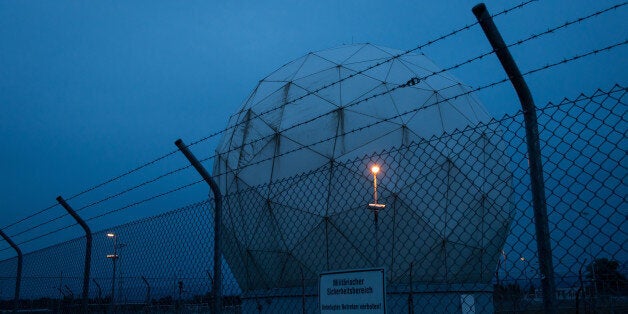
For years, big Internet companies like Twitter have released "transparency reports" to show users how often the government asks for their data. Now the National Security Agency is getting in on the act: The agency released its first-ever such report on Friday, complete with Internet-ready charts meant to show its use of "national security authorities."
But the report, produced by the Office of the Director of National Intelligence on the orders of President Barack Obama as a response to Edward Snowden's leaks, still leaves a lot unsaid -- and the numbers it does disclose may conceal more than they reveal.
"This report is inherently untrustworthy," said Amie Stepanovich, senior policy counsel at the digital rights group Access. "Every number in this report could be significantly smaller than it actually is, or be changed in order to protect what the intelligence community would call their methods and sources."
The report does reveal that, according to the government, it spied on more than 90,000 foreign targets in 2013 under the controversial Foreign Intelligence Surveillance Act. The government also reported that 248 U.S. citizens or residents had their information, stored by telecommunications companies, subject to queries in databases like the NSA's domestic phone-calling records dragnet.
But neither of those numbers conveys how many people the NSA is actually surveilling. In the NSA's lingo, "targets" could include people, groups or entire countries. The agency also relies on an executive order to spy on foreigners in bulk if it thinks the collection will not also scoop up Americans' communications, but there are no indications of how many records are collected under that authority.
"The actual number of people who have had their information wrapped up could be incredibly, exponentially larger because of that word 'target' that they use," Stepanovich said.
One interesting nugget the report does reveal is that all 90,000 foreign targets were swept up under a single order granted by the Foreign Intelligence Surveillance Court, which oversees much of the NSA's surveillance. The controversial section of the law giving the government that surveillance authority was approved as a way of putting the George W. Bush administration's warrantless wiretapping program under judicial oversight.
"How do you get almost 90,000 targets with one order?" wondered Jennifer Granick, director of civil liberties at the Stanford Center for Internet and Society. "It calls into question what the court is really approving."
The domestic phone dragnet also picks up many more people than the number in the report suggests. Because the NSA analyzes phone calls placed and received by people with up to three degrees of separation from the initial person queried, it potentially ran the numbers on millions of Americans. And for the NSA's purposes, corporations are people, too -- so the 248 "persons" in its report could mean many more actual humans are the subjects of initial searches.
One thing the report does show, said Stepanovich, is that the NSA embarked on a massive bulk collection program to spy on a relatively small number of Americans. She questioned why a more targeted collection program would not work.
"They're collecting information on 248 people, very personal information, for a program that has never been shown to be effective," she said. "For a purpose that we don't even know, because it's not doing what they say it's been doing -- it's not protecting against terrorist attacks."
The government has been careful to mention in its own report some of the caveats about the numbers it contained. Other caveats have been identified by researchers only after carefully parsing reports from the surveillance court or information from Snowden's leaks.
Both Stepanovich and Granick believe the NSA has much further to go toward truly opening its books.
The agency still has yet to respond to a question Sen. Ron Wyden (D-Ore.) posed to NSA Deputy Director Richard Ledgett about how many Americans it is performing "backdoor" searches on by looking through the communications that foreign targets exchanged with Americans. Ledgett on June 5 promised a response within two weeks, but there has been no public announcement yet that he has followed through. The House voted on June 19 to end such "backdoor searches."
"This is a baby step forward," said Granick. "This doesn't answer the questions that the public and Senator Wyden and others have been asking. And we are going to need more information."

